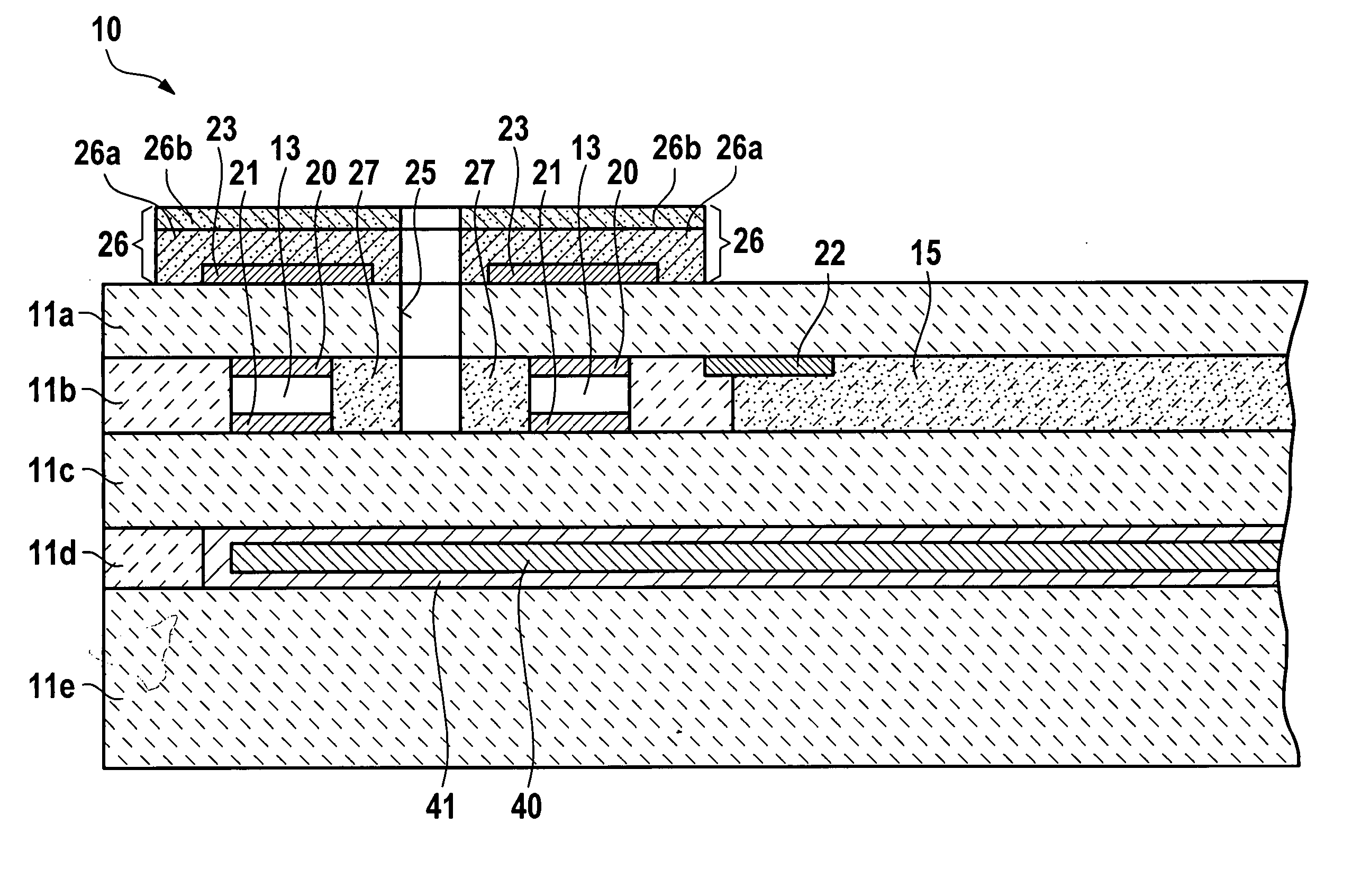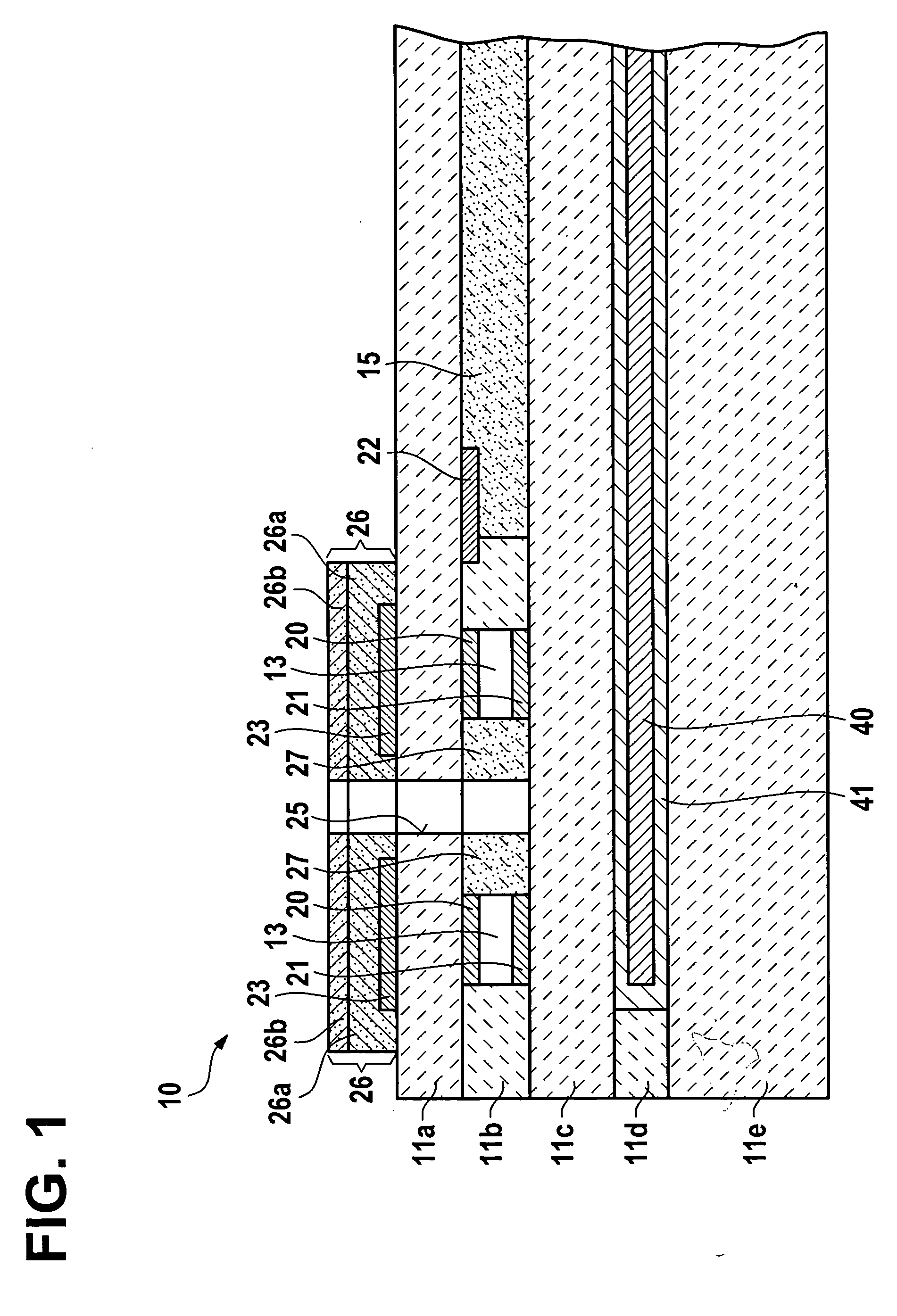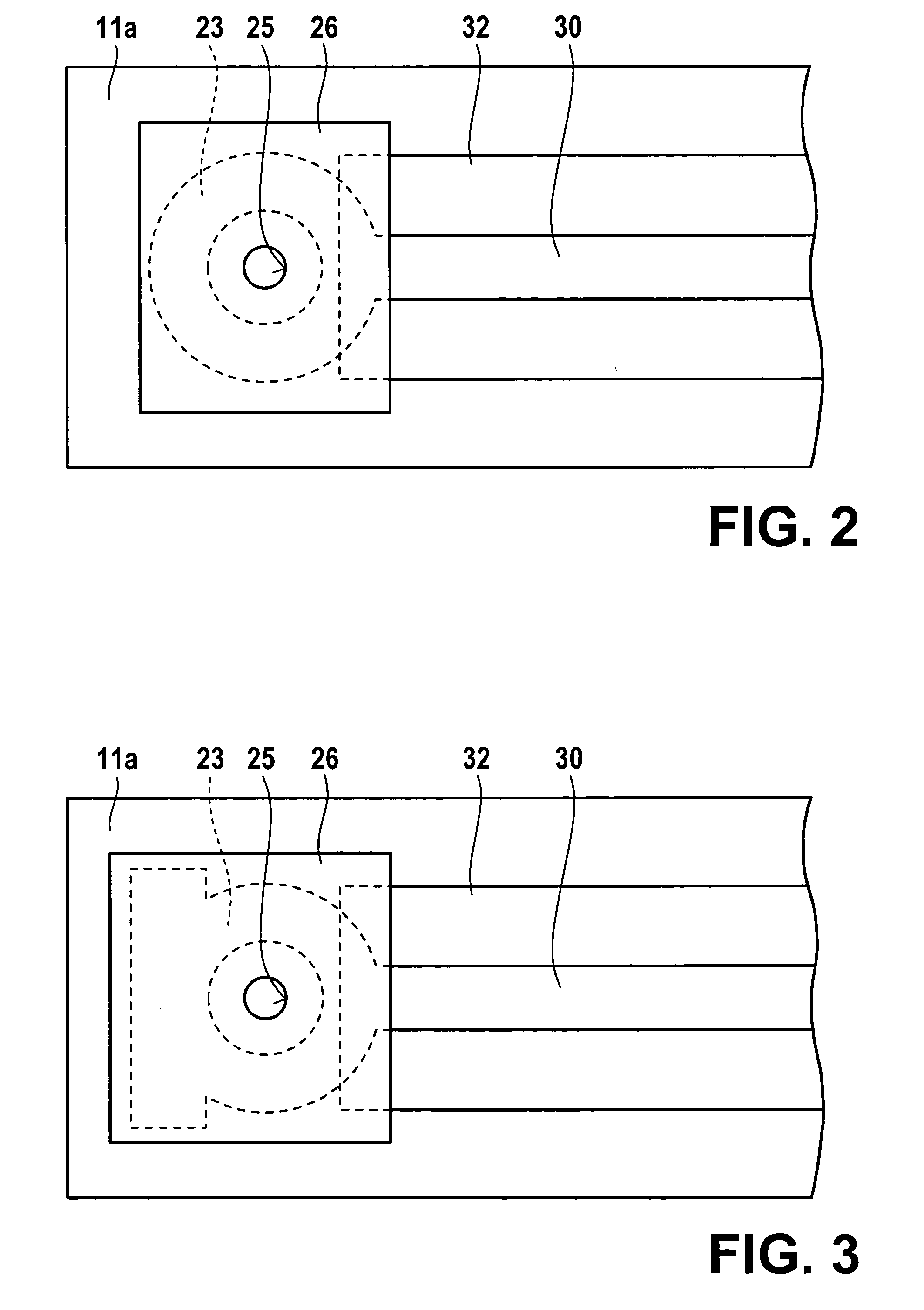Sensor element for determining gas components in gas mixtures and method for manufacturing the same
a technology of gas mixture and sensor element, which is applied in the direction of measuring devices, material electrochemical variables, instruments, etc., can solve the problems of short disturbance of the control of the electrochemical pump cell, counter-swing or overshoot phenomenon of the measuring signal, and increase the pump voltage requiremen
- Summary
- Abstract
- Description
- Claims
- Application Information
AI Technical Summary
Benefits of technology
Problems solved by technology
Method used
Image
Examples
first embodiment
[0026]FIGS. 1 and 2 show a schematic structure of the present invention. Planar sensor element 10 of an electrochemical gas sensor has a plurality of oxygen-conducting solid electrolyte layers 11a, 11b, 11c, 11d, and 11e, for example. Solid electrolyte layers 11a, 11c, and 11e are designed as ceramic sheets and form a planar ceramic body. They are composed of an oxygen-conducting solid electrolyte material such as stabilized Y2O2 or partially stabilized ZrO2.
[0027] In contrast, solid electrolyte layers 11b and 11d are produced by screen printing on a paste-like ceramic material, for example, on solid electrolyte layer 11a. As an example, the same solid electrolyte material as used for solid electrolytes 11a, 11c, and 11d is used as the ceramic component of the paste-like material.
[0028] The integrated form of the planar ceramic body of sensor element 10 is manufactured by laminating together the ceramic sheets imprinted with solid electrolyte layers 11b, 11d and function layers and...
third exemplary embodiment
[0050] Unlike the second exemplary embodiment, a cavity 50 over external pump electrode 23 of sensor element 10 is filled with a porous material 51. Porous material 51 has a higher porosity than a porosity of protective layer 26. Thanks to the selection of the porosity of porous material 51 in cavity 50 over external pump electrode 21, an additional degree of freedom is obtained regarding the design of sensor element 10. Otherwise this exemplary embodiment is identical to the second exemplary embodiment, so that reference may be made to the description given in connection with the second exemplary embodiment.
[0051] The sensor element according to the present invention and the method for its manufacture are not limited to the specific embodiments shown, i.e., other embodiments including other measuring electrodes, solid electrolytic layers, etc., are also conceivable. Furthermore, the above-described design of the external pump electrode and its protective layer may also be used in ...
PUM
| Property | Measurement | Unit |
|---|---|---|
| pressure | aaaaa | aaaaa |
| surface area | aaaaa | aaaaa |
| thickness | aaaaa | aaaaa |
Abstract
Description
Claims
Application Information
 Login to View More
Login to View More - R&D
- Intellectual Property
- Life Sciences
- Materials
- Tech Scout
- Unparalleled Data Quality
- Higher Quality Content
- 60% Fewer Hallucinations
Browse by: Latest US Patents, China's latest patents, Technical Efficacy Thesaurus, Application Domain, Technology Topic, Popular Technical Reports.
© 2025 PatSnap. All rights reserved.Legal|Privacy policy|Modern Slavery Act Transparency Statement|Sitemap|About US| Contact US: help@patsnap.com



